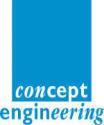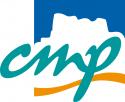UB09 Session 9
Date: Thursday 30 March 2017
Time: 10:00 - 12:00
Location / Room: Booth 1, Exhibition Area
| Label | Presentation Title Authors |
|---|---|
| UB09.1 | A TOOL FOR STATIC INSTRUCTION SET ARCHITECTURE ANALYSIS Presenter: Peer Adelt, Paderborn University / C-LAB, DE Authors: Bastian Koppelmann1, Wolfgang Mueller1, Bernd Kleinjohann2 and Christoph Scheytt1 1Heinz-Nixdorf Institute, DE; 2Paderborn University / C-LAB, DE Abstract Mutation based testing, which is applied to assess testbenches by mutations of designs under test, is well established in the hardware and software domain. We demonstrate our tool, which analyses all 798 instructions of the TriCore™ microcontroller architecture for mutations of their binary representation. The tool provides an interactive graphical interface, which indicates general and detailed instruction set (ISA) specific statistics of 1-, 2- and 3-bitflip mutations in opcode, data and address sections of the instructions and their impact on the program execution. The ISA analysis tool is applied as a front-end for automatic mutation generations of TriCore™ binaries. In this context, we also show how the CPU emulator QEMU can be applied as a framework for mutation based analysis based on the static analysis of the TriCore™ ISA and the software binary. More information ... |
| UB09.2 | TFA: TRANSPARENT CODE OFFLOADING ON FPGA Presenter: Roberto Rigamonti, HEIG-VD/HES-SO, CH Authors: Anthony Convers, Baptiste Delporte, Xavier Ruppen and Alberto Dassatti, HEIG-VD/HES-SO, CH Abstract Genomics, molecular dynamics, and machine learning are just the most recent examples of fields where FPGAs could provide the means to achieve interesting breakthroughs. However, HDL programming requires considerable multi-disciplinary skills, experience, large budgets, time, and a bit of wizardry. Given that most implementations are short-lived, the investment simply does not pay off. In this demo we propose a multi-vendor LLVM-based automated framework that can transparently - without the user or developer being aware of it - offload computing-intensive code fragments to FPGAs. The system relies on a performance monitor to detect computing-intensive code sections and, if they are suitable for offloading, extracts the Data Flow Graph and uses it to program an overlay pre-programmed on the FPGA, which then interacts with the Just-In-Time compiler executing the program. The overall process requires hundreds of microseconds, and can be easily reverted should the outcome be unsatisfactory. More information ... |
| UB09.3 | FLEXPORT: FLEXIBLE PLATFORM FOR OBJECT RECOGNITION & TRACKING TO ENHANCE INDOOR LOCALIZATION AND MAPPING Presenter: Marko Rößler, Technische Universität Chemnitz, DE Authors: Christian Schott, Murali Padmanabha and Ulrich Heinkel, TU Chemnitz, DE Abstract Object detection plays a crucial role in realizing intelligent indoor localization and mapping techniques. With the advantages of these techniques comes the complexity of computing hardware and the mobility. While the availability of open source computer vision algorithms and High-Level-Synthesis framework accelerates the development, the hybrid processing architecture of an All Programmable System on Chip (APSoC) enables efficient hardware-software partitioning. Using these tools, a generic platform was designed for evaluating the computer vision algorithms. Open source components such as Linux kernel and OpenCV libraries were integrated for evaluation of the algorithms on the software while Vivado HLS framework was used to synthesize the hardware counter parts. Algorithms such as Sobel filtering and Hough Line transformation were implemented and analyzed. The capabilities of this platform were used to realize a mobile object detection system for enhancing the localization techniques. More information ... |
| UB09.4 | AF3-MC: DEVELOPMENT OF MIXED CRITICALITY SYSTEMS USING MBSE Presenter: Thomas Boehm, fortiss, DE Authors: Johannes Eder and Sebastian Voss, fortiss, DE Abstract AutoFOCUS3 (https://af3.fortiss.org/) is an open-source model-based development tool, including a number of different analysis- and verification tools as well as design space exploration functionality, task scheduling dependent on a number of system requirements (timing, resource, energy, etc.), and code generators targeting C-code or VHDL. The presented demonstrator illustrates both a SW tool demonstrator and a corresponding HW demonstrator setup to show how a seamless model-based system approach could look like, w.r.t. to mixed-critical applications integrated on a (COTS) MC-platform. A floating ball can be controlled by an person by moving his hand over an US sensor, providing input to the control loop implemented in the high criticality part of the system. The low criticality part of the system which is running on the same CPU consists of the computation of the digits of PI and of the Fibonacci sequence, providing computationally intensive neighbors to the control loop. More information ... |
| UB09.5 | MULTI-CORE VERIFICATION: COMBINING MICROTESK AND SPIN FOR VERIFICATION OF MULTI-CORE MICROPROCESSORS Presenter: Mikhail Chupilko, ISPRAS, RU Authors: Alexander Kamkin, Mikhail Lebedev and Andrei Tatarnikov, ISPRAS, RU Abstract The complexity of modern cache coherence protocols (CCP) in multi-core microprocessors prevents from complete verification of shared memory subsystems by means of random test-program generators (TPG). The following steps are suggested to target the problem. The first step is to separately specify CCP features and generate CCP-specific events to be used in TPG when generating a test program (TP). The protocol is specified in Promela, with Spin making a test template (TT). Spin also produces UVM (or C++TESK) testbench to make the execution of the resulting TPs to be controlable and deterministic. The second step is to let TPG produce the memory access instructions causing desired CCP-specific behavior. As a TPG we use MicroTESK. Its Ruby-based TTs abstractly describe future TPs. MicroTESK processes that TT making TP with CCP-specific events. The resulting TP is executed together with the testbench to exactly reproduce the situation Spin had found to be important for such a protocol. More information ... |
| UB09.6 | XBARGEN: A TOOL FOR DESIGN SPACE EXPLORATION OF MEMRISTOR BASED CROSSBAR ARCHITECTURES. Presenter: Marcello Traiola, LIRMM, FR Authors: Mario Barbareschi1 and Alberto Bosio2 1University of Naples Federico II, IT; 2University of Montpellier - LIRMM laboratories, FR Abstract The unceasing shrinking process of CMOS technology is leading to its physical limits, impacting several aspects, such as performances, power consumption and many others.Alternative solutions are under investigation in order to overcome CMOS limitations.Among them, the memristor is one of promising technologies.Several works have been proposed so far, describing how to synthesize boolean logic functions on memristors-based crossbar architecture.However, depending on the synthesis parameters, different architectures can be obtained.In this demo, we show a Design Space Exploration (DSE) that we use to select the best crossbar configuration on the basis of workload dependent and independent parameters, such as area, time and power consumption.The main advantage is that it does not require any simulation and thus it avoid any runtime overheads.The demo aims to show the tool prototype on a selected set of benchmarks which will be synthesized on a memristor-based crossbar circuit. More information ... |
| UB09.7 | EMU: RAPID FPGA PROTOTYPING OF NETWORK SERVICES IN C# Presenter: Salvator Galea, University of Cambridge, GB Authors: Nik Sultana1, Pietro Bressana2, David Greaves1, Robert Soulé2, Andrew W Moore1 and Noa Zilberman1 1University of Cambridge, GB; 2Università della Svizzera italiana, CH Abstract General-purpose CPUs and OS abstractions impose overheads that make it challenging to implement network functions and services in software. On the other hand, programmable hardware such as FPGAs suffer from low-level programming models, which make the rapid development of network services cumbersome. We demonstrate Emu, a framework that makes use of an HLS tool (Kiwi) and enables the execution of high-level descriptions of network services, written in C#, on both x86 and Xilinx FPGA. Emu therefore opens up new opportunities for improved performance and power usage, and enables developers to more easily write network services and functions. We demonstrate C# implementations of network functions, such as Memcached and DNS Server, using Emu running on both x86 and NetFPGA-SUME platform and show that they are competitive to natively written hardware counterparts while providing a superior development and debug environment. More information ... |
| UB09.8 | TIDES: NON-LINEAR WAVEFORMS FOR QUICK TRACE NAVIGATION Presenter: Jannis Stoppe, University of Bremen, DE Author: Rolf Drechsler, University of Bremen / DFKI, DE Abstract System trace analysis is mostly done using waveform viewers -- tools that relate signals and their assignments at certain times. While generic hardware design is subject to some innovative visualisation ideas and software visualisation has been a research topic for much longer, these classic tools have been part of the design process since the earlier days of hardware design -- and have not changed much over the decades. Instead, the currently available programs have evolved to look practically the same, all following a familiar pattern that has not changed since their initial appearance. We argue that there is still room for innovation beyond the very classic waveform display though. We implemented a proof-of-concept waveform viewer (codenamed Tides) that has several unique features that go beyond the standard set of features for waveform viewers. More information ... |
| UB09.9 | HEPSYCODE: A SYSTEM-LEVEL METHODOLOGY FOR HW/SW CO-DESIGN OF HETEROGENEOUS PARALLEL DEDICATED SYSTEMS Presenter: Luigi Pomante, University of L'Aquila, IT Authors: Giacomo Valente1, Vittoriano Muttillo1, Daniele Di Pompeo1, Emilio Incerto2 and Daniele Ciambrone1 1University of L'Aquila, IT; 2Gran Sasso Science Institute, IT Abstract Heterogeneous parallel systems have been recently exploited for a wide range of application domains, for both the dedicated (e.g. embedded) and the general purpose products. Such systems can include different processor cores, memories, dedicated ICs and a set of connections between them. They are so complex that the design methodology plays a major role in determining the success of the products. So, this demo addresses the problem of the electronic system-level hw/sw co-design of heterogeneous parallel dedicated systems. In particular, it shows an enhanced CSP/SystemC-based design space exploration step (and related ESL-EDA prototype tools), in the context of an existing hw/sw co-design flow that, given the system specification and related F/NF requirements, is able to (semi)automatically propose to the designer: - a custom heterogeneous parallel architecture; - an HW/SW partitioning of the application; - a mapping of the partitioned entities onto the proposed architecture. More information ... |
| UB09.10 | PULP: A ULTRA-LOW POWER PLATFORM FOR THE INTERNET-OF-THINGS Presenter: Francesco Conti, ETH Zurich, CH Authors: Stefan Mach1, Florian Zaruba1, Antonio Pullini1, Daniele Palossi1, Giovanni Rovere1, Florian Glaser1, Germain Haugou1, Schekeb Fateh1 and Luca Benini2 1ETH Zurich, CH; 2ETH Zurich, CH and University of Bologna, IT Abstract The PULP (Parallel Ultra-Low Power) platform strives to provide high performance for IoT nodes and endpoints within a very small power envelope. The PULP platform is based on a tightly-coupled multi-core cluster and on a modular architecture, which can support complex configurations with autonomous I/O without SW intervention, HW-accelerated execution of hot computation kernels, fine-grain event-based computation - but can also be deployed in very simple configuration, such as the open source PULPino microcontroller. In this demonstration booth, we will showcase several prototypes using PULP chips in various configuration. Our prototypes perform demos such as real-time deep-learning based visual recognition from a low-power camera, and online biosignal acquisition and reconstruction on the same chip. Application scenarios for our technology include healthcare wearables, autonomous nano-UAVs, smart networked environmental sensors. More information ... |
| 12:00 | End of session |
| 12:30 | Lunch Break in Garden Foyer Keynote Lecture session 11.0 in "Garden Foyer" 1320 - 1350 Lunch Break in the Garden Foyer |





